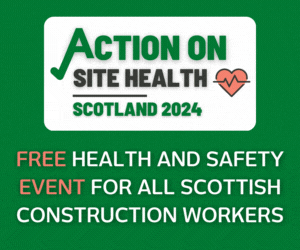Hazel Davies: The renaissance in urban living
After a century of flight to the suburbs, urban living has come into vogue for a variety of reasons. Queensberry Properties’ sales and marketing director, Hazel Davies, explores further.

Hazel Davies
For much of the 20th century, living in the heart of a city was unfashionable and even somewhat undesirable. Demand for suburban homes saw city limits extending into the surrounding countryside, while inner-city areas tended to fall quiet after the evening rush hour. Districts containing some of Scotland’s finest Victorian homes (including Glasgow’s Park district and Edinburgh’s New Town) gradually evolved into largely commercial districts. Meanwhile, former residents embraced commuting as they relocated to properties in satellite towns or leafy suburbs.
New century, new attitudes
Since the new millennium dawned, city living has enjoyed a welcome renaissance as twenty- and thirty-somethings reversed the historic flight to the suburbs. Greater affluence has dovetailed with a desire among young professionals to spend their free time and money in social settings. Café culture and the growth of dining out has seen people embracing local amenities, while the growing cost and stress of commuting can be eliminated by moving to a home near your place of work.
Our attitudes to land use have evolved markedly over recent decades, too. Industrial cities like Glasgow have invested heavily in replacing semi-derelict warehouse districts and former dockland with shopping complexes and stylish apartment blocks. Architectural trends like townhouses and integral garages permit more efficient use of available sites, helping to counterbalance rising land and property costs. Meanwhile, modern inner-city developments tend to offer urban gardens, roof terraces and landscaped communal areas – the leafy outdoor environments which once drove homeowners towards suburban and rural districts.
Days of future past
This growing appreciation of our natural environment has been a key factor underpinning our renewed love for city living. From the 1970s onwards, the conservation movement helped to spruce up sooty tenements and protect historic buildings from the bulldozer. People began to fall back in love with the homes they’d once cherished, but more recently overlooked. And since the millennium, growing pressure to save greenbelt land has seen conscientious builders like Queensberry Properties, acquiring and repurposing vacant urban land.
These brownfield sites were typically once home to factories or warehouses. They’re usually situated on the periphery of city centres – ideal for the low-rise apartment buildings beloved by students and young professionals. Meanwhile, Scotland’s world-famous stock of urban Victorian buildings is being transformed back into residential homes, as former corporate tenants relocate to more commuter-friendly business parks. These period properties often lack modern amenities, but their popularity underlines the renewed appetite for living and working in one place.
The choice is yours
Of course, city living doesn’t suit everyone. Urban sites tend to have compact footprints which encourage the construction of apartments, rather than houses or bungalows. Many of today’s suburban developments combine rural surroundings with the convenience of local amenities, usually at lower prices than comparable homes would command in many city locations. An excellent example of this is Queensberry Properties’ stunning Hydro Gardens development at Peebles where all properties were snapped up by discerning buyers eager to secure a highly desirable ‘must-have’ family property in one of the Scottish Borders’ most sought after locations. Yet we are also building apartment developments on enviably-situated gap sites across Scotland’s biggest cities. That’s a level of choice house hunters simply wouldn’t have enjoyed during the last century.





















